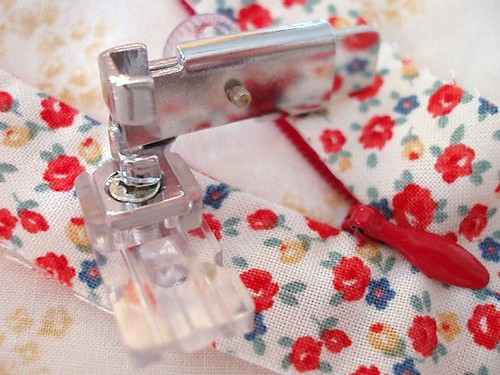 Hidden or Invisible zippers sound so intimidating, don't they? Well, the truth of the matter is they're actually easier to put in than an ordinary zipper, especially with the right tool.
Hidden or Invisible zippers sound so intimidating, don't they? Well, the truth of the matter is they're actually easier to put in than an ordinary zipper, especially with the right tool.April 1930's is now carrying the Low Shank Hidden Invisible Zipper Foot Attachment. I much prefer this attachment over the misshapen plastic doo-hickeys found in a little package at the sewing stores, which look more like multi-colored mind puzzlers than they do a Sewing Machine Attachment. This low shank invisible zipper foot has a clear or somewhat opaque foot mounted to a metal attachment bracket which has a screw on the backside for adjusting side-to-side depending on where you want your needle.
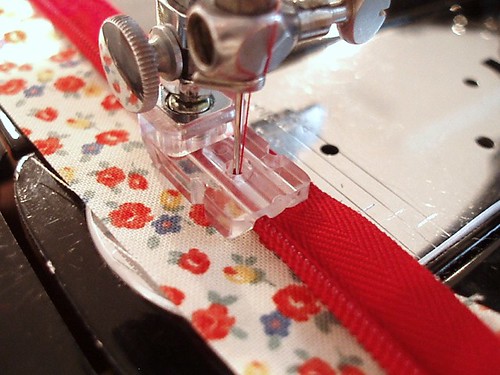 I prefer to stitch a basting line on the fabric along the seam allowances so that I can align the zipper tape correctly. Press the zipper out flat... then with right sides together, allow the teeth to set in the groove opposite the seam allowance edge. Make sure your needle is catching the zipper tape correctly and stitch.
I prefer to stitch a basting line on the fabric along the seam allowances so that I can align the zipper tape correctly. Press the zipper out flat... then with right sides together, allow the teeth to set in the groove opposite the seam allowance edge. Make sure your needle is catching the zipper tape correctly and stitch.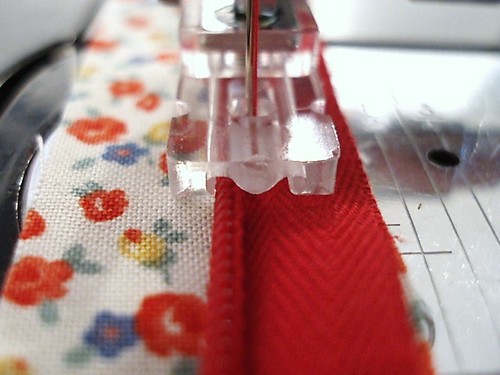 (Most hidden zippers are accompanied with instructions for inserting it into the seam - now you will have an easy foot to use for application!)
(Most hidden zippers are accompanied with instructions for inserting it into the seam - now you will have an easy foot to use for application!)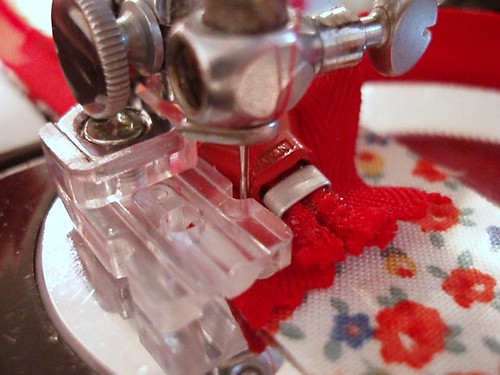 When you need to stitch the bottom section of the zipper tape in place, you can use the outer edge of the attachment.
When you need to stitch the bottom section of the zipper tape in place, you can use the outer edge of the attachment.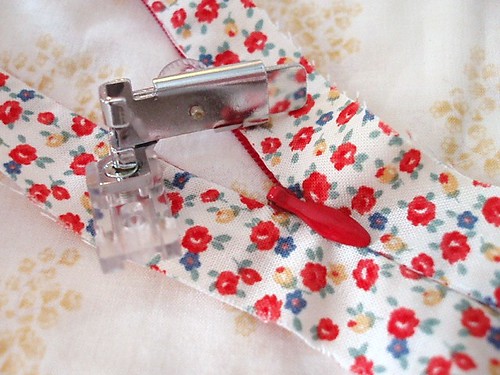 ~ ~ ~ ~ ~ ~ ~ ~ ~ ~
~ ~ ~ ~ ~ ~ ~ ~ ~ ~For traditional zippers, you can use the old-fashioned Singer Zipper Foot Attachment as shown below. I've labeled this one the wide Zipper Foot Attachment simply because it has a wider foot. I've found that it makes little difference for application, wide or narrow.
The attachment can do more than just zippers - make your own piping, too!
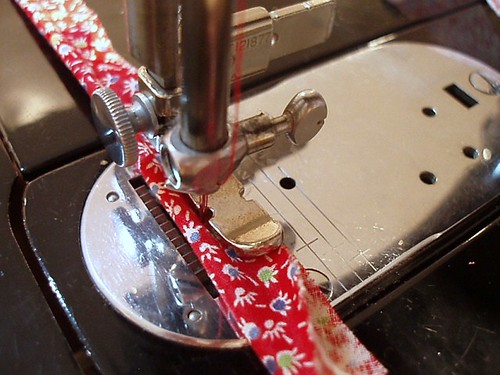 Cut your own bias from a fabric of choice, add an appropriate cording width to the center wrong side, fold it over and begin stitching!
Cut your own bias from a fabric of choice, add an appropriate cording width to the center wrong side, fold it over and begin stitching!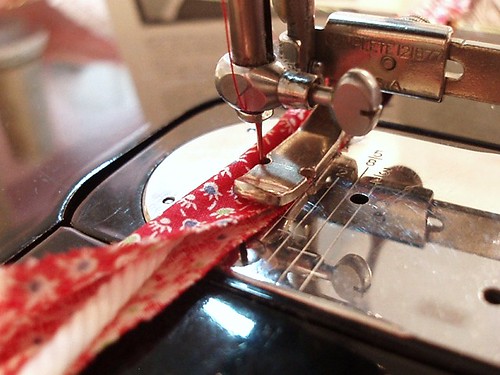 Then you'll use your zipper foot again to apply the piping to your fabric. Place the piping on the seam allowance on the right side and baste in place. Mine happens to be 1/2 inch so the edge of my piping actually coincided with the edge of the fabric, but if your seam allowance was 5/8, your piping might be inset a little bit. (It won't show because it will get stitched within the seam allowance.)
Then you'll use your zipper foot again to apply the piping to your fabric. Place the piping on the seam allowance on the right side and baste in place. Mine happens to be 1/2 inch so the edge of my piping actually coincided with the edge of the fabric, but if your seam allowance was 5/8, your piping might be inset a little bit. (It won't show because it will get stitched within the seam allowance.)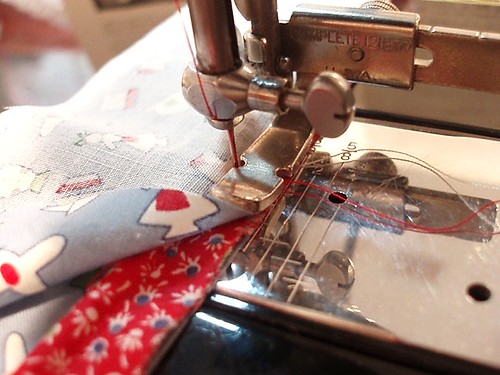 Then stitch the two pieces of fabric together on your seam allowance and the piping will show through to the right side beautifully.
Then stitch the two pieces of fabric together on your seam allowance and the piping will show through to the right side beautifully.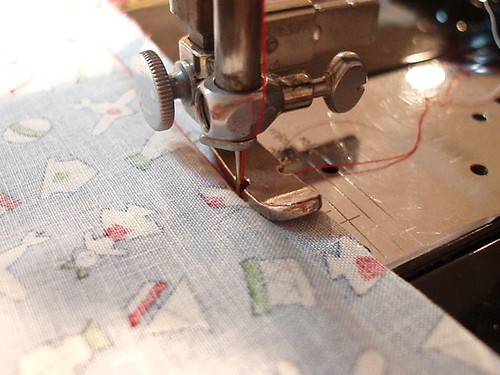
You can see below the zipper and piping sample.
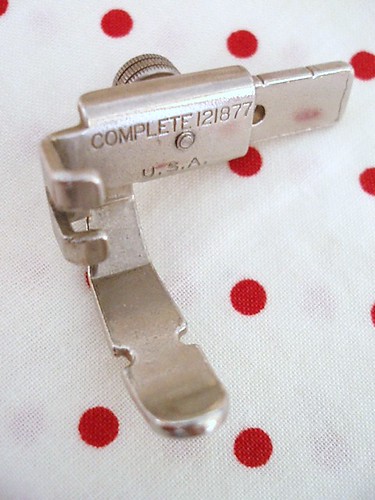
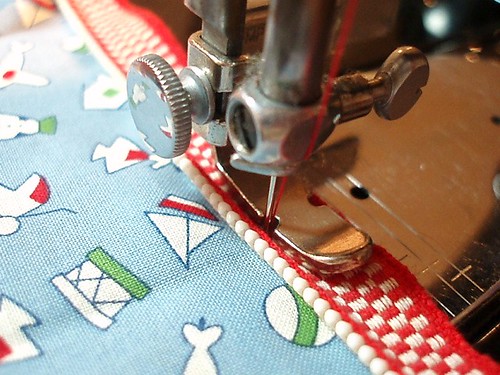
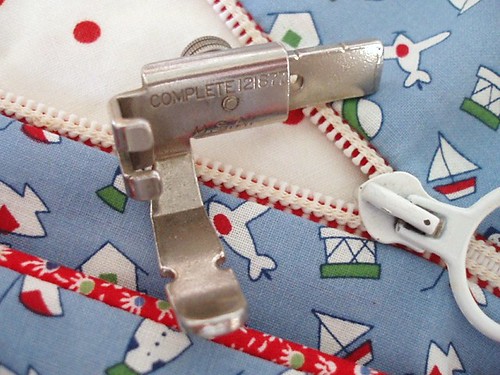


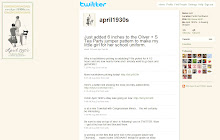

3 comments:
Excellent! Your tutorials are a great source of inspiration and knowledge (I’m always looking forward to the next one! Love your attention to the small (but rather important) details, valuable technical advice, inspiration (love your work and fabric choices). Thanks for posting!
Beautiful work!
Great post thank you
Post a Comment